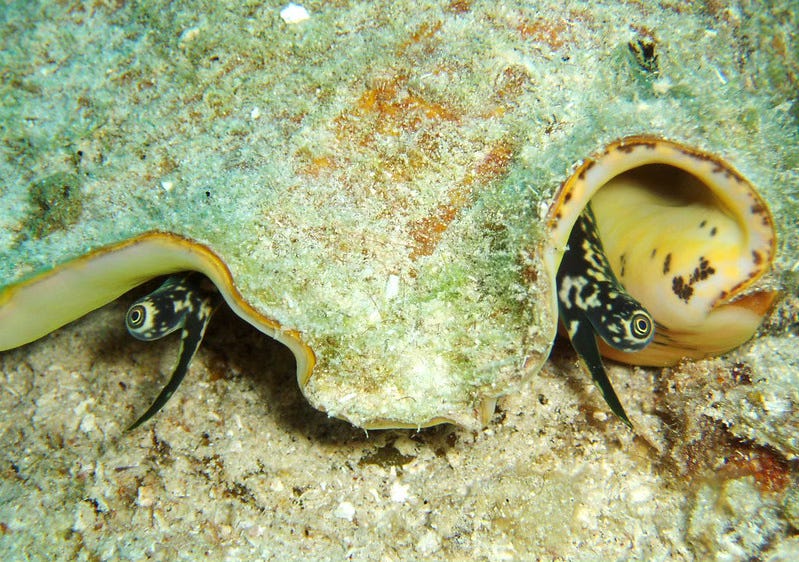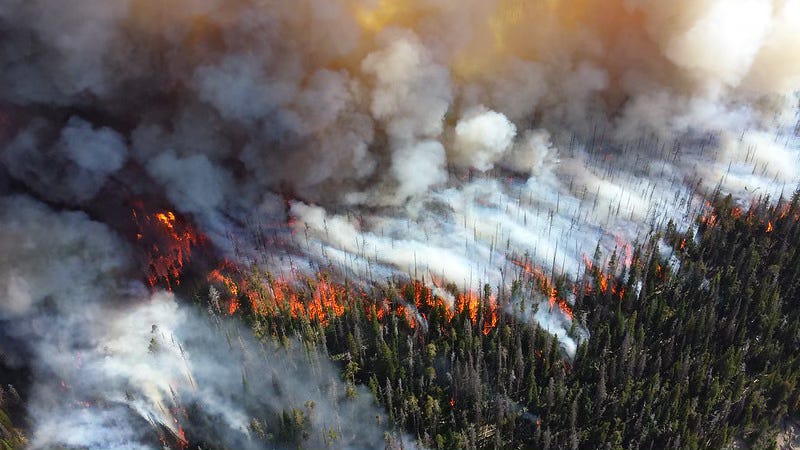End Extinction Silence
A biodiversity journalist reflects on the lack of media coverage of the legal wildlife trade

A year ago, I set out on a journey to vigorously report on the legal trade in wildlife. Why? Because this gigantic trade is a relentless driver of the world’s biodiversity crisis.
Figures from the Convention on International Trade in Endangered Species of Wild Fauna and Flora (CITES) – the global wildlife trade treaty body – help to illustrate the scale of exploitation.
Its records show that specimens of species like American alligators, tokay geckos, Asian water monitors, brown sea cucumbers, reticulated pythons, queen conch, Red tegu lizards, lake sturgeon, and Black-and-white tegu lizards, along with corals, just to name a few, were traded by the millions from the wild between 2012 and 2021.
Within CITES, specimen is a term used to describe both live individuals and animal-derived products like skins, meats, and blood samples.
In total, countries reported exporting over 68 million specimens from thousands of different animal species across that decade, along with more than 60 million kilos of live or dead animals and their body parts. These numbers are solely for animals sourced from the wild, with many more traded from captivity-based sources.
Countries also report trade using other measures, such as litres and metres, so these figures do not represent the entirety of trade in wild-sourced animals during the period.
Although some transactions under CITES are for purposes like science and conservation, many of the trades relate to commercial industries, such as luxury goods made of exotic leathers, the pet trade and traditional medicine.
CITES currently regulates global trade in some 40,900 species of threatened plants and animals, with the trade in many other wild species falling outside its scope. A 2020 study, for example, analysed online sales of reptiles in the pet trade, finding that three-quarters of the species involved were not covered by CITES.
In other words, the examples here are just the tip of a very big iceberg that appears to be playing a major role in wildlife declines.

Key driver of wildlife losses
According to a 2019 assessment by the Intergovernmental Science-Policy Platform on Biodiversity and Ecosystem Services (IPBES), an independent body established by nation states, direct exploitation of organisms is the second biggest driver of biodiversity loss and change in terrestrial and freshwater environments. In marine ecosystems, it’s the biggest driver.
The Living Planet Index (LPI) – created by WWF and the Zoological Society of London – offers another measure of exploitation’s impact. Its mainstay is a metric that assesses vertebrate species abundance, which indicates that “global wildlife populations have plummeted by 69% on average since 1970.” But the LPI team has also created a Utilised Species Index. This refers to species that are exploited, i.e. ‘used’ by people, either for subsistence purposes or trade, with the latter happening on local, national, and international levels.
The Index for utilised species shows that their populations “declined on average by 50% between 1970 and 2016,” compared to just 3% for non-utilised ones.
Simply put, these findings and other research suggest that although examples of sustainable wildlife trade exist, the commercial exploitation of species is happening at wildly unsustainable levels.
Poor management
Meaningful oversight of trade is key to ensuring that it doesn’t harm species’ survival. Indeed, the LPI’s Utilised Species Index found that populations of species subject to exploitation “fared better” if they were managed. Yet robust management is lacking in the wildlife trade, including for CITES species.
Take the nine named examples above, starting with the two invertebrates. Both the brown sea cucumber and queen conch are in peril, according to assessments by the International Union for Conservation of Nature and the US’ National Oceanic and Atmospheric Administration, respectively. The bodies pointed to exploitation as the leading cause of these species’ predicaments.
The other seven named species are vertebrates. Despite this, the LPI only includes data from two of them – the American alligator and lake sturgeon – in its core Index. Why is that important?
As the LPI explains on its website, in order to assess how wildlife populations are faring globally, the Index will include data on any vertebrate species as long as there is “robust population trend data available.” It states:
The LPI includes data for threatened and non-threatened species – if it’s monitored consistently over time, it goes in!
This suggests that populations of the five other named vertebrate species are not ‘monitored consistently over time’, at least not enough to meet the Index’s standards. Indeed, researchers say that a lack of robust data on exploited species’ populations is a widespread issue in trade.

Naturally, muscular oversight of trade is vital to ensure it is sustainable. But good management is also necessary to guarantee that trade is carried out in accordance with the relevant rules and, critically, isn’t being used as a cover for wildlife crime.
As a 2023 paper highlighted, for instance, when researchers tested samples of ostensibly legal caviar products from Eastern European countries, they found that around half of them were in fact illegal. Likewise, there are widespread concerns about illicit laundering of wild-caught animals through facilities that claim to be legally selling captive-bred individuals or products derived from them. These concerns relate to animals such as macaques, great apes, birds of prey, and reptiles, to name just a few.
To sum up, oversight of the legal wildlife trade is presently insufficient, even for species subject to CITES’ regulation. This is evident in the fact that some species continue to be considered threatened by exploitation, despite enjoying CITES’ protections. It’s also apparent in the lack of available data about exploited species’ populations, as monitoring is a necessary element of robust oversight. Moreover, the enduring concerns and evidence about links between legal and illegal trade point to insufficient safeguards to eliminate this risk.
Proof of concept
When it comes to press coverage of wildlife exploitation, the illegal trade dominates. Despite its gigantic size, lack of adequate oversight, and profound potential impacts, there is limited media reporting on the legal trade in wild species.
I became an environmental journalist in 2020, after entering the media industry some years earlier and slowly but surely gravitating towards my ultimate ‘beat’. As a staffer at a publication called The Canary, I reported on some legal wildlife trade issues. Then in April 2023, I became the Earth Journalism Network’s (EJN) inaugural fellow for the CITES Legal Trade Journalism Fellowship.
It is this project that I set out on a year ago, aiming to report on the legal trade in earnest.
Within the fellowship, I have been trying to place stories in publications on a freelance basis. Although I have succeeded in some instances, the pickup by media outlets was much less than I and EJN had hoped it would be.
Every freelance journalist knows there is always a certain level of rejection involved in pitching stories. This is particularly true when it comes to wildlife stories that aim to delve into regulatory loopholes and gaps, or focus on less charismatic headline-grabbing species. But the rate of knock-backs surpassed what would normally be expected.
This outcome, then, served as proof of concept. Launched due to a dearth of media coverage on the legal trade in wildlife, the fellowship has shown how entrenched this lack of attention is among publishers.
“You can’t solve a problem by ignoring it”
I cannot help but be reminded of a similar situation with the climate crisis. For years, both the quantity and quality of media reporting on this existentially important issue has been found lacking. For instance, Media Matters probed coverage of a landmark UN climate report in 2018, finding that most of the US’ top newspapers failed to mention it on their homepages the day after release.
There have been some improvements more recently. Nonetheless, during the hottest year on record – 2023 – US corporate broadcast networks reduced their climate coverage by 25%.

This is why organisations like End Climate Silence were established – to demand that the media adequately report on the crisis. Covering Climate Now (CCN) is another initiative that was launched in 2019 by the Columbia Journalism Review and The Nation to encourage better reporting on the issue.
As CCN’s co-founders Mark Hertsgaard and Kyle Pope wrote ahead of the launch, the media has a responsibility “to awaken, inform, and rouse the people to action” rather than “sleepwalking us toward disaster” in the face of the climate emergency. “You can’t solve a problem by ignoring it,” they added.
The exact same is true of the extinction crisis and its primary drivers, including the wildlife trade. Public awareness of these issues is key. Nonetheless, reporting on biodiversity loss lags even behind climate coverage. For instance, one 2017 study found that media coverage of climate change from the US, Canada, and the UK, even if lacking, was as much as eight times higher compared to biodiversity issues between 1991 and 2016.
Biodiversity is the bedrock of a functional planet and the risks of staying on the current trajectory are grave indeed. As IPBES has warned, the decline of the planet’s “essential variety of life forms” is a danger to “economies, livelihoods, food security and the quality of life of people everywhere.”
Further losses can be stymied if policymakers, businesses, and citizens embrace change – and act with the urgency this crisis demands. But media attention is necessary to help spur all those actors to action.
In short, alongside ending climate silence, we must end extinction silence.
Here are the stories published under the fellowship. Many thanks to the editors and publications involved for offering a platform for these articles:
Enforcing horn trade ban — the world needs to channel its inner rhino mom
Opportunity knocks for wildlife trade body to step up for great apes
Western exceptionalism in the trade of gods
It will take a village to save the world’s wild travellers
Out-of-Control Wildlife Trade Is Shackling a Key Climate Solution
Calls for change as tonnes of coral taken from Great Barrier Reef
Conserving Arowanas Needs More Than Releasing Fish – Part One (co-writer)
Conserving Arowanas Needs More Than Releasing Fish - Part Two (co-writer)
Can the sad tale of the Asian arowana have a happy ending?
Alarm over trophy hunters taking aim at Amboseli’s ‘iconic giants’ (co-writer)
UK sportswear firm ditches kangaroo leather over sustainability concerns



